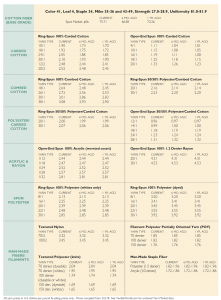CAMBRIDGE, Mass. — February 16, 2018 — Advanced Functional Fabrics of America (AFFOA) is proud to announce a pilot advanced functional fabric (AFF) curricula development project with the Greater Lawrence Technical School (GLTS), the MIT Edgerton Center and the STEAM (Science, Technology, Engineering, Arts and Mathematics) Studio Education Foundation.
Over the past few decades, the U.S. has lost many of its manufacturing capabilities in fiber and textiles. Recent breakthroughs in fiber materials and manufacturing processes have allowed design and production of advanced functional fabrics that see, hear, sense, communicate, store and convert energy, regulate temperature, monitor health and change color. These technologies are positioned to create high-value added products which can revitalize domestic textile manufacturing and generate high quality jobs. However, manufacturing fabrics with advanced capabilities requires a workforce with a new combination of skill sets, which this program is designed to stimulate.
“We are excited about the AFF educational collaboration, not only because it will help prepare students for innovative skill building opportunities and careers, but also because it is an important milestone for all of us in our mission to catalyze a domestic, manufacturing-based, revolution of the textile industry into a value-added, high-tech industry by transforming traditional fibers, yarns, and textiles into highly sophisticated devices,” said AFFOA CEO, Yoel Fink.
The collaboration between AFFOA, GLTS, the MIT Edgerton Center and the STEAM Studio Education Foundation aims to develop the next generation of multi-skilled workers by exposing students to a myriad of technical skills in the context of manufacturing advanced functional fabrics. The AFF curricula will integrate skills learned at AFFOA High Tech Fabric Discovery Center into an introductory-level curriculum that encompasses Fiber Design, Textile Design and Product Design of Advanced Functional Fabrics and will be piloted at GLTS.
“AFF offers students far more than an opportunity to pursue a career, it allows them to be part of a potential industry that will hopefully impact the quality of people’s lives,” said John Lavoie, Superintendent, Greater Lawrence Technical School. “Students will be inspired and excited to be the first entrepreneurs to design and produce high tech clothes of the future,” he added.
The curricula will have two interwoven learning pathways that support the student’s ability to build a multi-skilled and multi-faceted framework: Machining, Manufacturing aimed at students interested in AFF production and Engineering Design aimed at students interested in AFF design. Together these pathways are expected to position the students for multiple degree programs and career opportunities in advanced manufacturing, functional fabrics and beyond. This program will also help AFFOA develop a model for scaling alike programs throughout the Commonwealth, in other states and Fabric Discovery Centers, as well as developing a standard for making program materials widely available.
“We have 20 years of experience working with middle and high school students on project-based engineering,” said Forbes Director of the Edgerton Center and Dean for Undergraduate Research, Prof. J. Kim Vandiver. “As part of the collaboration, we are excited to advance education in functional fabrics and to move the needle in workforce development in the textile industry and US manufacturing.”
Posted March 5, 2018
Source: Advanced Functional Fabrics of America (AFFOA)






